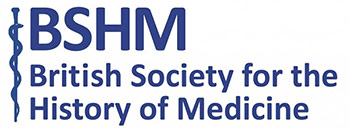For me, any mention of anatomy conjures up memories of the hours spent during medical school in the Dissection Room, overpowered by the smell of formaldehyde, trying in vain to orientate myself with more than a little help from Gray’s Anatomy for Students. I remember being constantly told that whole-body dissection was a privilege, and not something that was offered by all medical schools. But sometimes I wondered, when did anatomy become such a fundamental component of a medical education, and why?
The answer I feel, lies with a certain character from the sixteenth century: Andreas Vesalius (1514-1564).
Born in Brussels in the early sixteenth century, Vesalius was the son of the apothecary to the Holy Roman Emperor. He became influenced by medicine at an early age and chose to pursue a career as a physician. Vesalius is renowned both for his skill as an anatomist and for his crucial role in elevating the status of the discipline of anatomy: he, more than any other individual, established it as an elementary component of a medical education.
Investigation into the field of anatomy before Vesalius was limited. There had been plenty of animal dissection: Aristotle’s extensive work on the classification of living things from the fourth century B.C. is probably the best example here. However, evidence of human dissection before the sixteenth century is sparse. There was a brief period in the third century B.C. when Herophilus of Chalcedon and Erasistratsus of Cos had carried out human dissections but enthusiasm for this practice was short-lived and it was soon prohibited due to the pressure of public opinion – Egyptians believed in the need of an intact body for the afterlife.
It was not until the twelfth century that there was a revival in interest in the field of human anatomy. At this time, ancient Greek physician and philosopher Claudius Galen was still regarded as the reference point in terms of human anatomy. However, Galen did many of his studies on animals and consequently some of his observations relating to the ‘human’ body were in fact false. Despite this, Galen’s writings had been accepted as scripture and had not been questioned… until Vesalius came along.
Vesalius’ greatest achievement in my mind was his book, De humani corporis Fabrica (‘On the Fabric of the Human Body’): the first complete account of human anatomy. This work was impressive in its content – it corrected many of Galen’s previous mistakes and errors – but more importantly, in what it represented in the wider field of medicine and medical education.
The Fabrica took Vesalius four years to complete but he was an absolute perfectionist. Extensive correspondence between Vesalius and his publisher demonstrates how he stipulated exactly how the Fabrica was to be set out, which drawings were to be included and how the various parts of the anatomy should be labelled. The Fabrica is beautifully illustrated and enormously detailed: a salute to Vesalius’ meticulous care and attention.
The Fabrica generated an anatomical revolution. Anatomy used to be stigmatised as the poor relation of surgery, but the Fabrica helped assert it as an integral component of medicine. Finally, anatomy was being recognised as a great skill, and the humble anatomist was being duly applauded.
Something that Vesalius emphasised in the Fabrica is the importance of observation and ‘seeing for oneself’. He was adamant that medical students learnt best by picking up a scalpel themselves rather than just reading a book or learning by rote. Vesalius himself refused to have a ‘cutter’ – an assistant who would perform the dissection for him. Instead, Vesalius did the dissection himself, surrounded by mesmerised students, and lectured as he went. This is wonderfully illustrated on the frontispiece of the Fabrica: on the left hand side of the exposed cadaver is Vesalius, pointing out the various abdominal contents, getting his hands dirty! Students surround Vesalius, clamouring to get to the front, eager to see the great anatomist at work.

Image 1: Frontispiece, Vesalius, De Humani corporis fabrica libri septem. Credit: Wellcome Collection. CC BY
Ultimately, by the end of the sixteenth century, Vesalius had surpassed Galen as the primary anatomical authority. He is thought of as one of the great innovators of anatomy, not because he discovered anything radically new, but because he altered the way in which the medical community thought about and practised anatomy. Vesalius’ work inspired and influenced budding anatomists and there were rapid advances in practical anatomy after his death. Realdo Columbo’s work on the heartbeat and pulmonary transit is one such example, and this proved vital in William Harvey’s later work on the circulation of blood.
So, to all those medical students out there, when you are next in the DR at the end of a long morning, more concerned about your mounting hunger than the insertion point of iliopsoas, take a moment to remember Vesalius: the greatest anatomist that ever was.
Lucy Havard
Further Reading
- ‘Andreas Vesalius’, Science Museum (online). Available at: http://broughttolife.sciencemuseum.org.uk/broughttolife/people/andreasvesalius
- ‘Vesalius’ Renaissance anatomy lessons’, British Library (online). Available at: https://www.bl.uk/learning/cult/bodies/vesalius/renaissance.html
- Vivian Nutton, Ancient Medicine. Routledge: London, 2012.
